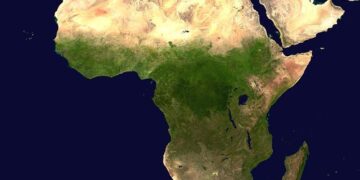A stunning new satellite video has captured an extraordinary natural formation on Mars: a sprawling maze that stretches over 1,000 miles across the red planet’s surface. This mesmerizing labyrinthine network, revealed in unprecedented detail, offers scientists and space enthusiasts alike a captivating glimpse into Mars’ geological history. The footage, released by researchers and featured on Live Science, not only showcases the planet’s intricate terrain but also raises intriguing questions about the processes that shaped this vast, otherworldly labyrinth.
Exploring the Vast 1000-Mile Maze on Mars Revealed by New Satellite Footage
Recent satellite imagery has unveiled an astounding labyrinth stretching over 1,000 miles across the rugged Martian terrain, offering new insights into the planet’s enigmatic surface features. This intricate maze-like structure, etched deeply into the crimson landscape, challenges previous conceptions about Mars’ geological evolution and hints at complex past environmental conditions. Scientists are particularly fascinated by the maze’s winding pathways and abrupt dead ends, suggesting potential volcanic, tectonic, or even ancient water-erosion origins.
The satellite footage, captured with unprecedented clarity, allows researchers and enthusiasts alike to virtually navigate the maze’s serpentine routes, highlighting key characteristics such as steep cliff faces and deep chasms. Below is a snapshot comparison of the maze’s primary sections, illustrating its scale and diversity:
| Region | Length (miles) | Notable Features |
|---|---|---|
| Crimson Corridors | 350 | Steep rock walls, narrow pathways |
| Echoing Ravines | 420 | Deep chasms, potential water channels |
| Dusty Labyrinth | 230 | Wide open mazes, loose sediment layers |
- Geological formations indicating complex historical activity
- Potential markers of ancient water flow patterns
- New opportunities for future Mars exploration missions
Uncovering Geological Mysteries and Potential Clues to Martian History
Stretching over 1,000 miles, the winding geological formations observed in this latest satellite footage offer a rare glimpse into Mars’ ancient past. Layers of sediment and rock reveal evidence of sustained erosion, hinting at the presence of liquid water long ago. Scientists are particularly intrigued by the intricate maze-like patterns, which could uncover vital clues about the planet’s climatic shifts and volcanic activity. These formations act as a natural archive, preserving Martian history in a way never seen before.
The video has sparked renewed discussion among planetary geologists on possible terrain-shaping processes, including:
- Wind-driven erosion shaping narrow channels and elevated ridges
- Repeated flooding events possibly carving deeper pathways
- Volcanic lava flows intersecting older sediment deposits
- Subsurface ice melt contributing to sudden land collapses
| Feature | Length (miles) | Possible Origin |
|---|---|---|
| Deep Channel A | 250 | Ancient River Flow |
| Ridge Complex B | 180 | Volcanic Activity |
| Maze Network C | 600 | Wind Erosion |
How This Mesmerizing Video Enhances Future Mars Exploration and Research Plans
This captivating satellite video unlocks unprecedented insights into Mars’ labyrinthine terrain, offering scientists a dynamic platform to refine landing site selections and navigation strategies for upcoming missions. By visualizing a sprawling 1,000-mile network of canyons and ridges in stunning detail, researchers can better assess geological features that may harbor clues about the planet’s past water activity and potential habitability. Such detailed terrain mapping is crucial for rover path planning, ensuring safer traversal and maximizing scientific returns in regions previously inaccessible or poorly understood.
Furthermore, this mesmerizing visual tool bolsters collaborative efforts between robotics experts and planetary geologists by:
- Highlighting hazard-prone zones that rovers must avoid,
- Identifying mineral-rich areas for advanced sampling,
- Facilitating remote navigation simulations ahead of actual surface operations.
Together, these advantages streamline research planning and pave the way for integrating advanced AI-driven exploration technologies, ultimately fast-tracking humanity’s quest to unravel the mysteries of the Red Planet.
| Feature | Exploration Benefit | Future Impact |
|---|---|---|
| High-resolution terrain data | Precise landing zone identification | Reduced mission risk |
| Real-time navigation views | Enhanced rover mobility | Extended mission lifespan |
| Geological feature visualization | Targeted sampling opportunities | Improved understanding of Mars history |
Wrapping Up
As scientists continue to analyze the intricate details revealed in this stunning satellite video, the 1,000-mile-long Martian maze offers not only a glimpse into the planet’s geological past but also new avenues for future exploration. This mesmerizing visual journey underscores the growing capabilities of space observation technology, bringing us closer to unraveling the mysteries of the Red Planet one mile at a time.































